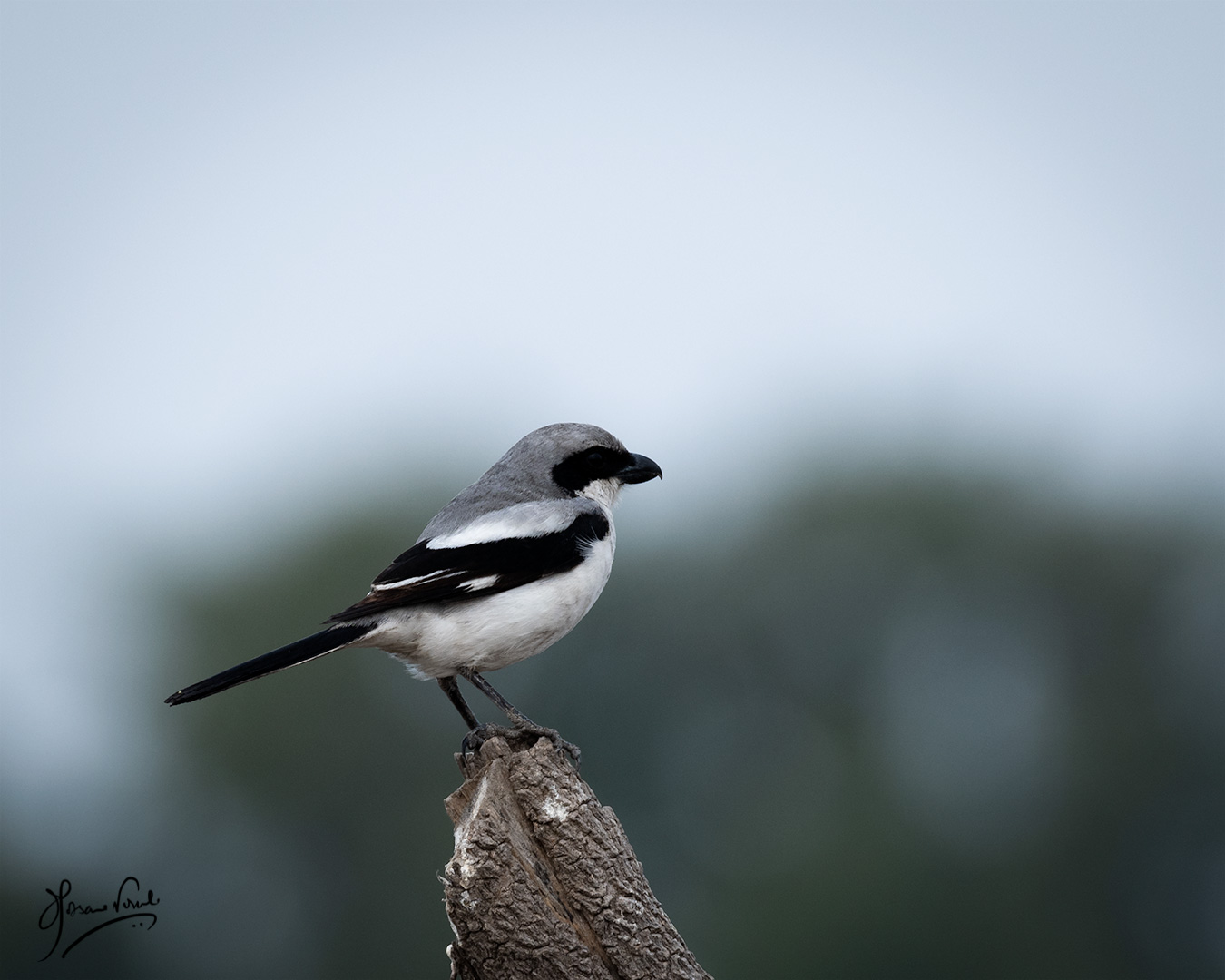
Kali Adventure Camp, Dandeli
The Kali Tiger Reserve area spans across hills and dense forest. Drives can be quiet and sighting of birds not easy. Having said that, our best sighting of the Lesser Adjutant Stork was from here. The bird had majestically stationed itself high on a tree. One bird we were keen on seeing on this trip was the Rufous Woodpecker. Woodpeckers generally are busy bodies, going up branches, pausing in between to peck at the bark. Incredibly the one we saw stayed in one position for quite some time. Being against the light, we couldn’t get good pictures but were very satisfied looking at it through our binoculars.

We were wondering if we would get to see any birds around this busy little town, Dandeli. We were in for a pleasant surprise! As we stepped out into a foggy day, a raucus sound alerted us to some activity. Through the haze, we sighted two pairs of Malabar Pied Hornbills on a tree hardly a few meters away! We were all set to get our camera gear out when our naturalist, Manjunath said, “There are plenty more to see, don’t worry!” He was so right. On a fig tree, by the side of the town street, there were Pied Hornbills on almost every branch. Interestingly they seem to sit in pairs.

We drove to the Timber Depot situated a short distance away. It is quite popular with bird watchers, nature lovers and morning walkers. At the depot, it seemed relatively quiet. The fog started to lift. Manjunath spotted a little bird foraging on the dry leaves on the ground. It was a Forest Wagtail! It appeared to have given a wake-up call to the other birds. Soon we spotted Blue-capped Rock Thrush, Asian Paradise Flycatcher, Golden-fronted Leafbird, Greater Goldenback, Indian Nuthatch and Taiga Flycatcher among others.



We covered the Timber Depot on two mornings. The second day brought us the sight and sound of the White-bellied Woodpecker. It’s one of the larger woodpeckers. You can hear it quite some distance away. One of the most interesting sounds one can hear is a woodpecker pecking at the wood. It’s literally like a drill hammering at the wood. The skull bones of woodpeckers are so evolved so as to cushion their brains against the hard knocks of their beak. A woodpecker is known to peck almost 10-11 thousand times a day!
Old Magazine House, Ganeshgudi
Our next stop was the Old Magazine House at Ganeshgudi, a half an hour drive through a winding green forest road. Just short of the lodge, we found a lone bird sitting on the electric cable. Thinking it to be a wagtail, we almost overlooked it, till our binoculars told us a different story. It was a Black-headed Bunting! Lesson learnt – never assume.
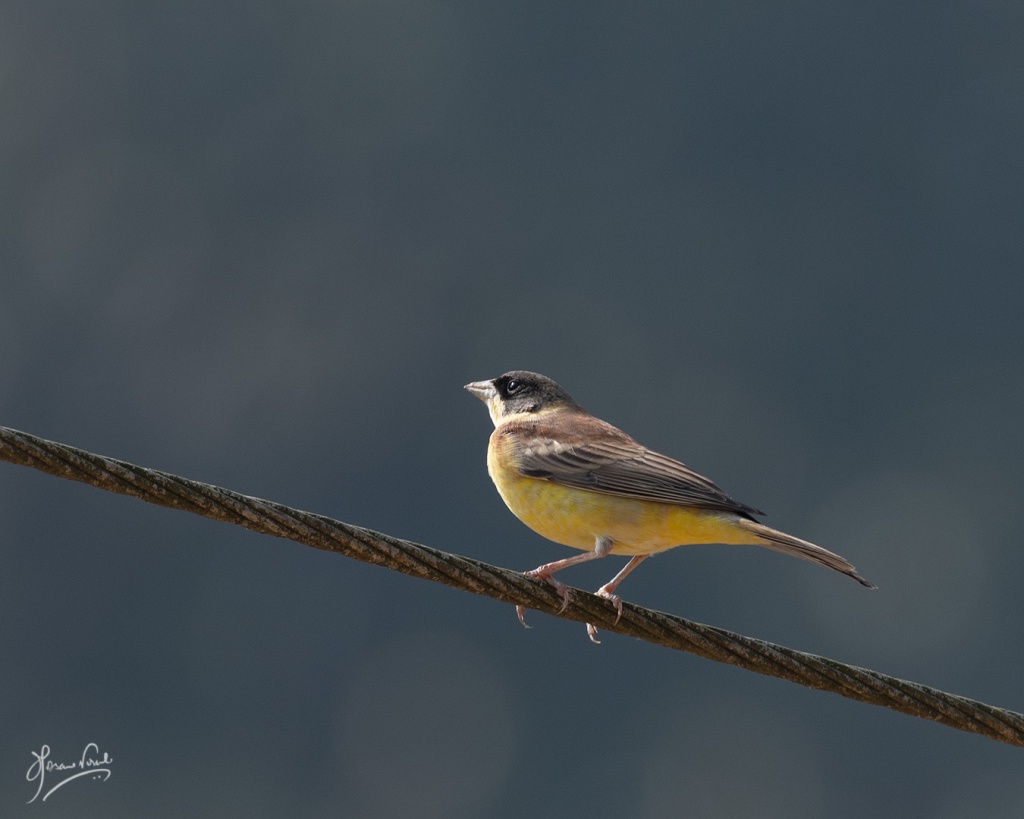
Old Magazine House is a veritable treasure for both birders and bird photographers. We spent a few hours at the hide fascinated by the routine followed by various species of birds flitting in and out of the water baths. Brown-cheeked Fulvetta, Orange-headed Thrush, White-bellied Flycatcher, Paradise Flycatcher, Emerald Dove, Oriental White-eye, Dark-fronted Babbler, Indian Blackbird, Indian Yellow Tit, to name a few. Meanwhile, the Malabar Giant Squirrel was trying out Olympic standard acrobatic moves cleverly using its hind legs and bushy tail!

The road to the Old Magazine House is also worthy of exploration. As we walked down the road, a bird flew across. Vinayak, our Naturalist, started to scan the trees. On a thick branch, sitting under the shadow of leaves, was a Crested Goshawk! Lifer!
Further down the red earth paved path, Vinayak picked up the hammering of the woodpecker we were so keen to see. We peered into the mesh of leaves and branches to spot one, hard at work chipping into the bark of a tree! I think I want to re-name this woodpecker as a Heart-stopping Woodpecker! All possible angles were tried to get a clear image of this pecking beauty but it was not to be. To save us spraining our necks, it obliged us by moving to the dry branches of a creeper on the other side. Finally we could just stand back and admire its dainty shape.
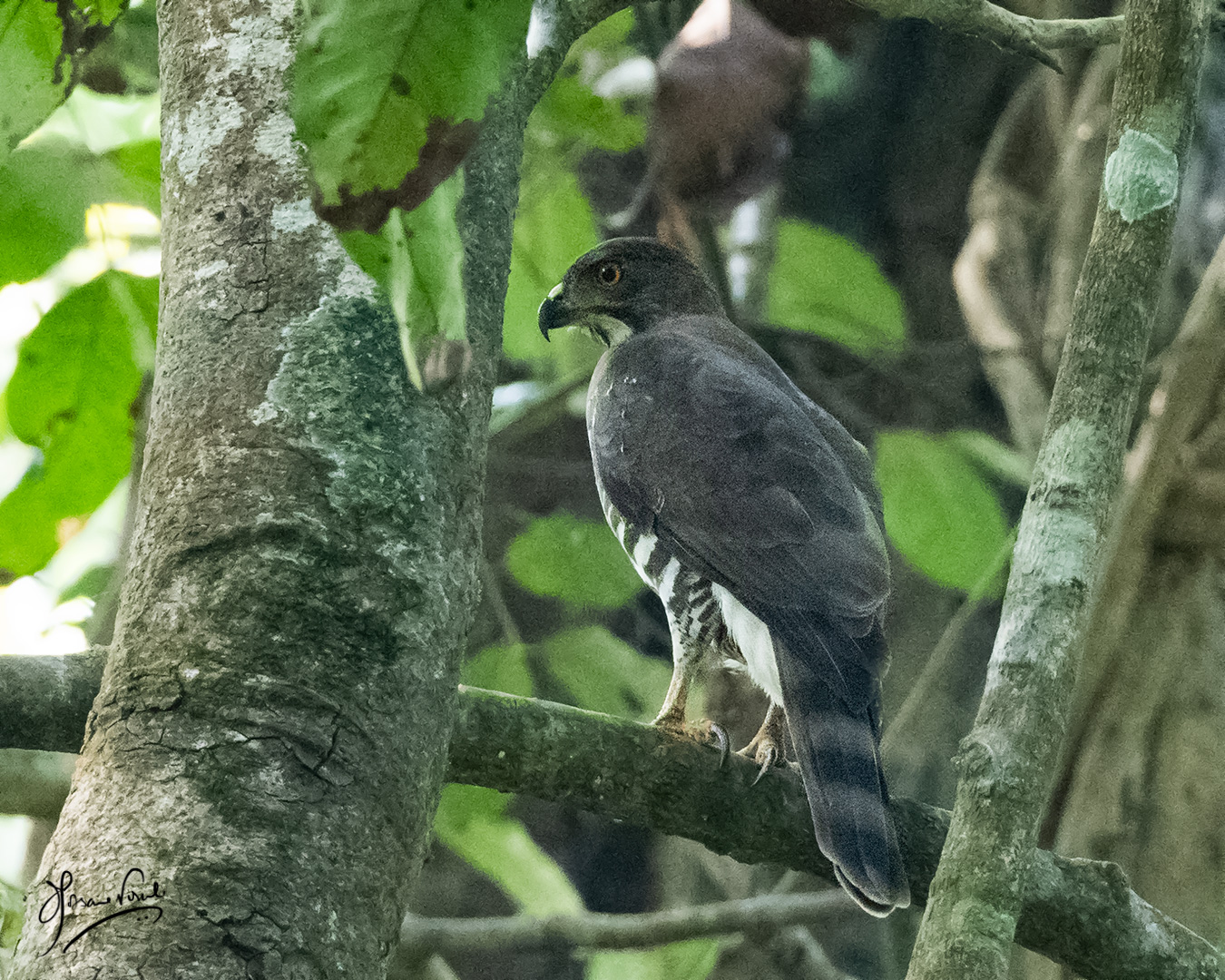

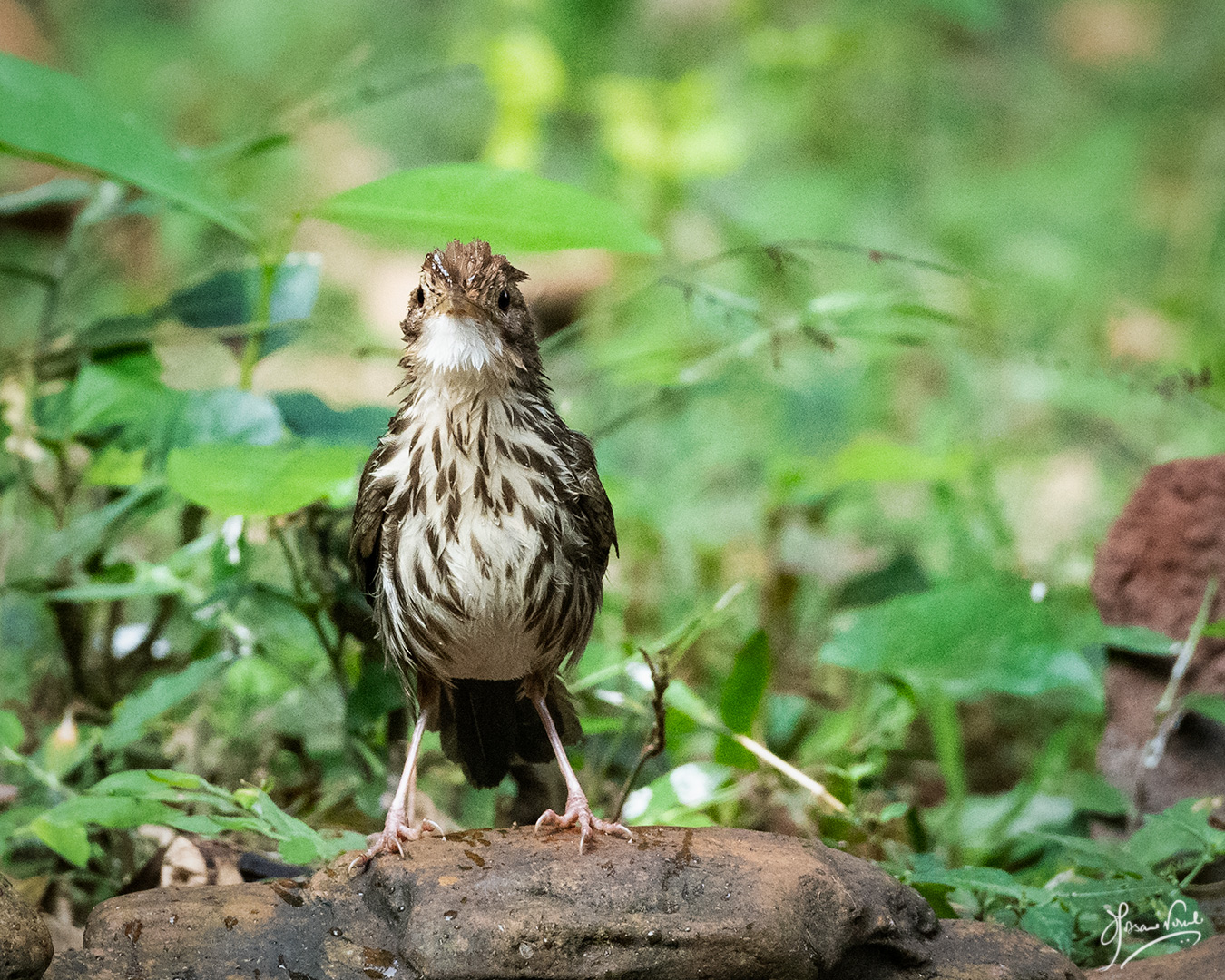
In the evening, we drove towards the Supa bridge. We sat down in a clearing waiting for the Malabar Pied Hornbills. Nothing could have prepared us for what was to come. As the evening wore on, by the droves they started to fly towards the surrounding trees. Their loud calls started coming from all around us. A pair of hornbills took off from a tree further away, flying down towards us. The mid-air courtship was amazing to see! Known as butting, the hornbills lock their curvy long beaks while in flight. Don’t know if it was enough for them to court each other’s attention but it definitely caught ours!

Malabar Pied Hornbills
Back at the lodge, post dinner five of us sat around the bonfire exchanging anecdotes. Suddenly a flash of pale wings flew past. I nearly fell off my chair and let out “Owl! Owl!” There were sceptical looks mixed with anticipated excitement all around. The faint light of the torch fell on the owl perched in the clear on a low branch on a tree nearby. Spot-bellied Eagle Owl! In the frenzied few minutes that followed, all of us ran to our rooms to fetch the cameras. We re-grouped near the bonfire to fix the appropriate camera settings. We were all set, cameras pointing in the right direction. Torch switched on. No owl! The owl had given us the slip! Suddenly there was another flash of feathers. He was back! We finally took the images we had hoped for. With oddly shaped ear tufts, a daunting hooked beak, spotted white belly, it manages to look pretty and menacing at the same time.
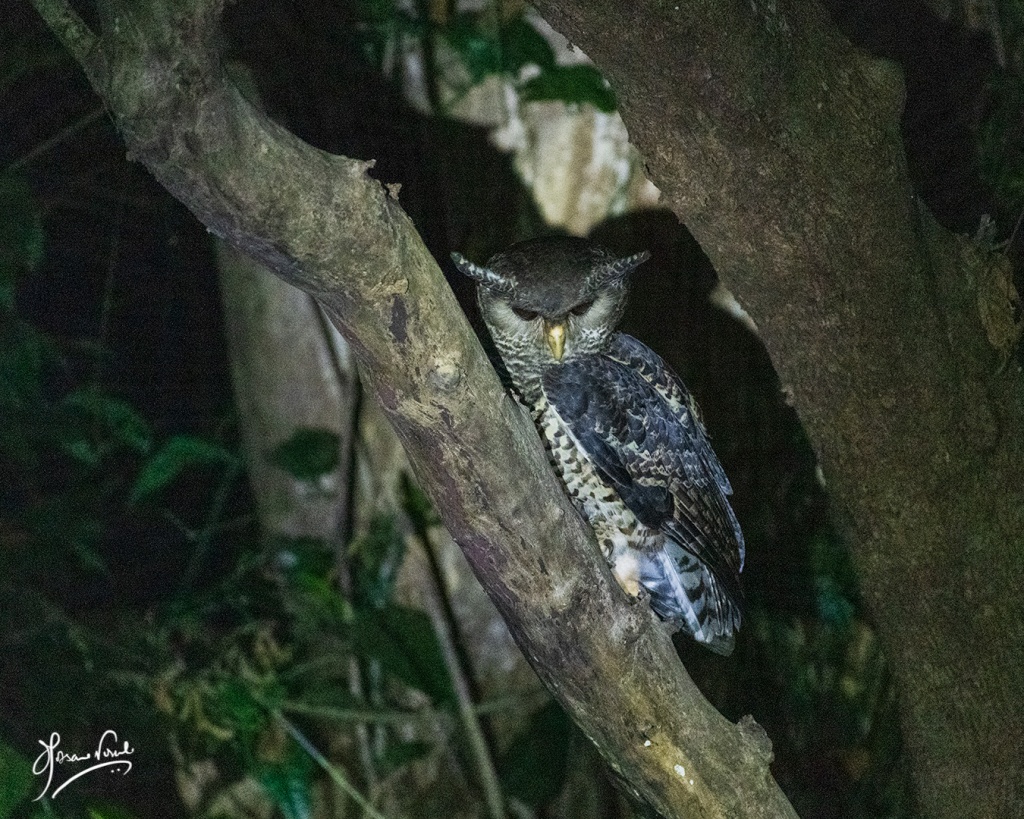
The next morning we drove towards Hampi. We had heard of the Bar-headed Geese arriving in the thousands at the Magadi Lake. It is believed to be the southernmost point in India that they migrate to. We decided to do a small detour to the lake. We reached Magadi Lake around noon. There were plenty of geese, however most were far away from us. About twenty odd were kind enough to fly to our end and made our trip worthwhile. Among them were also ten Ruddy Shelducks. Even highways can spring in a surprise or two. We spotted the White-eyed Buzzard a few times and even a Great Gray Shrike.


